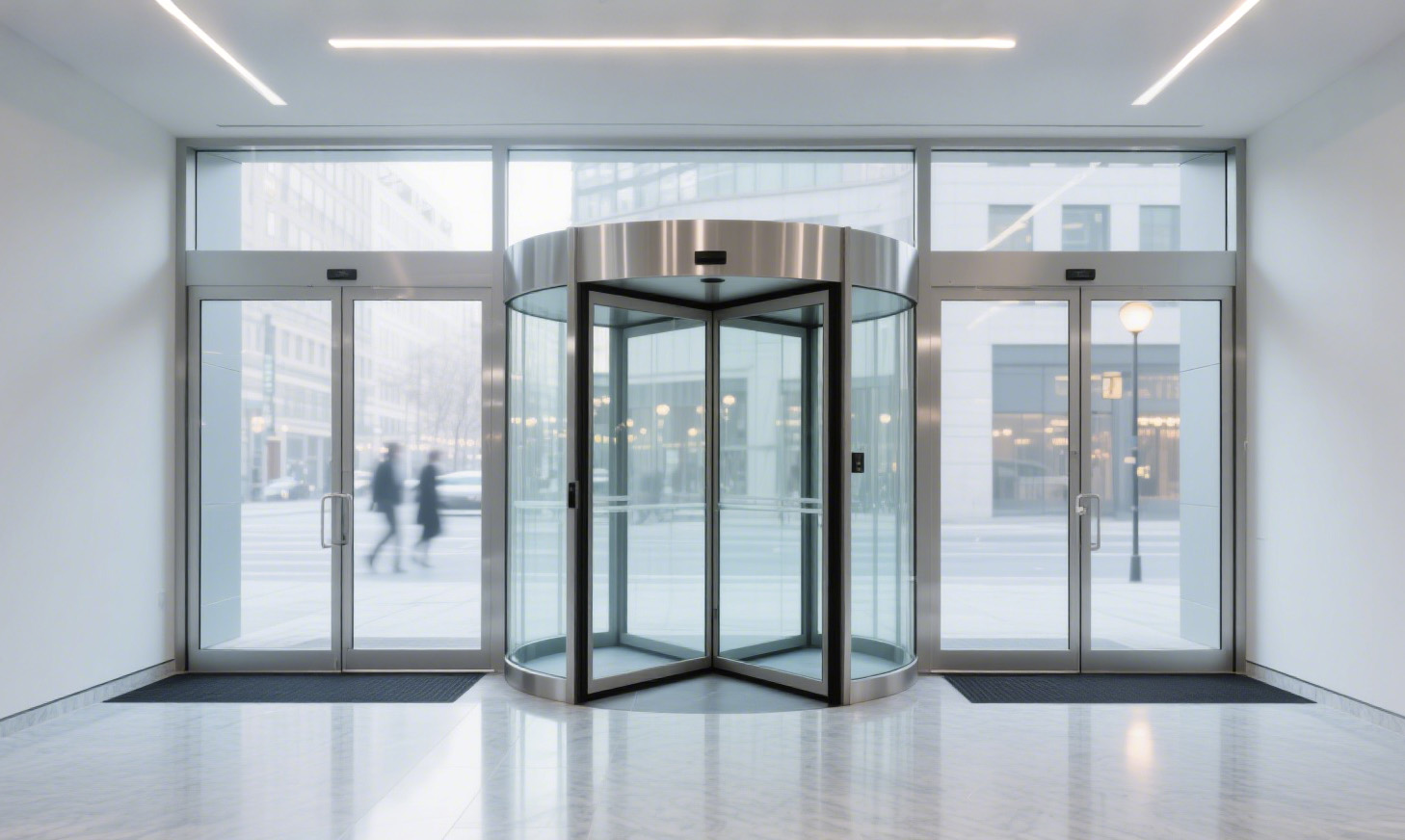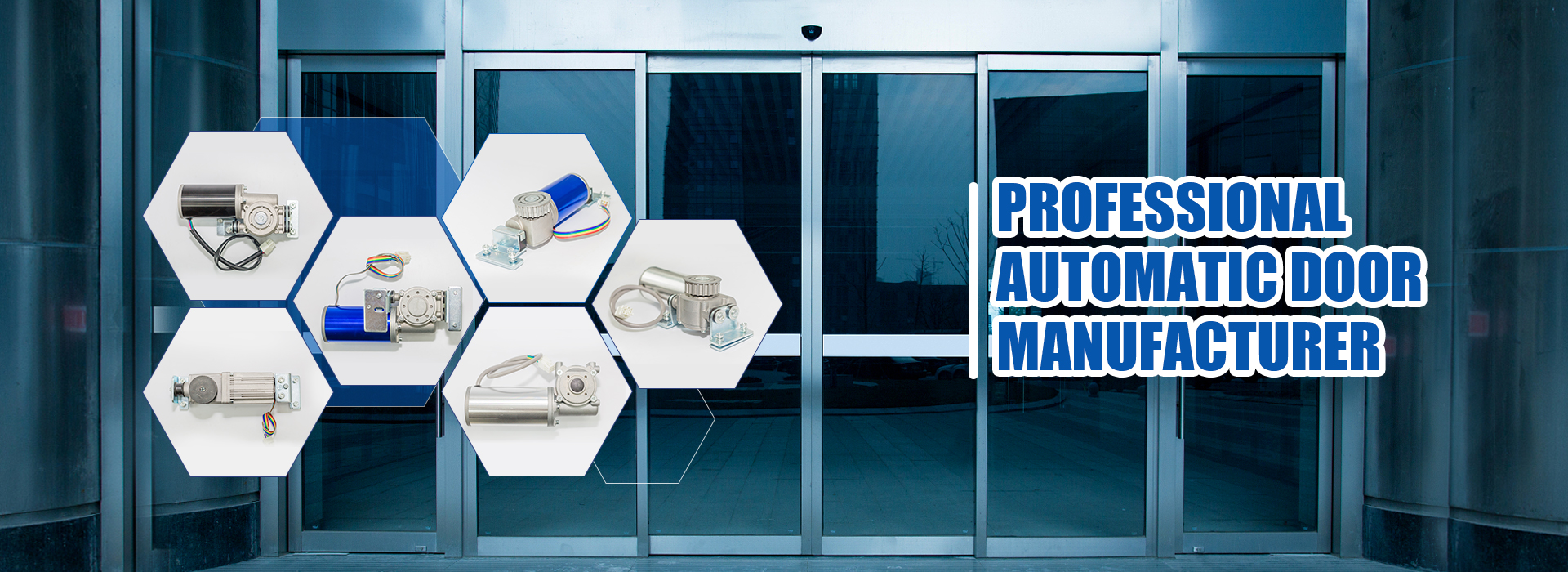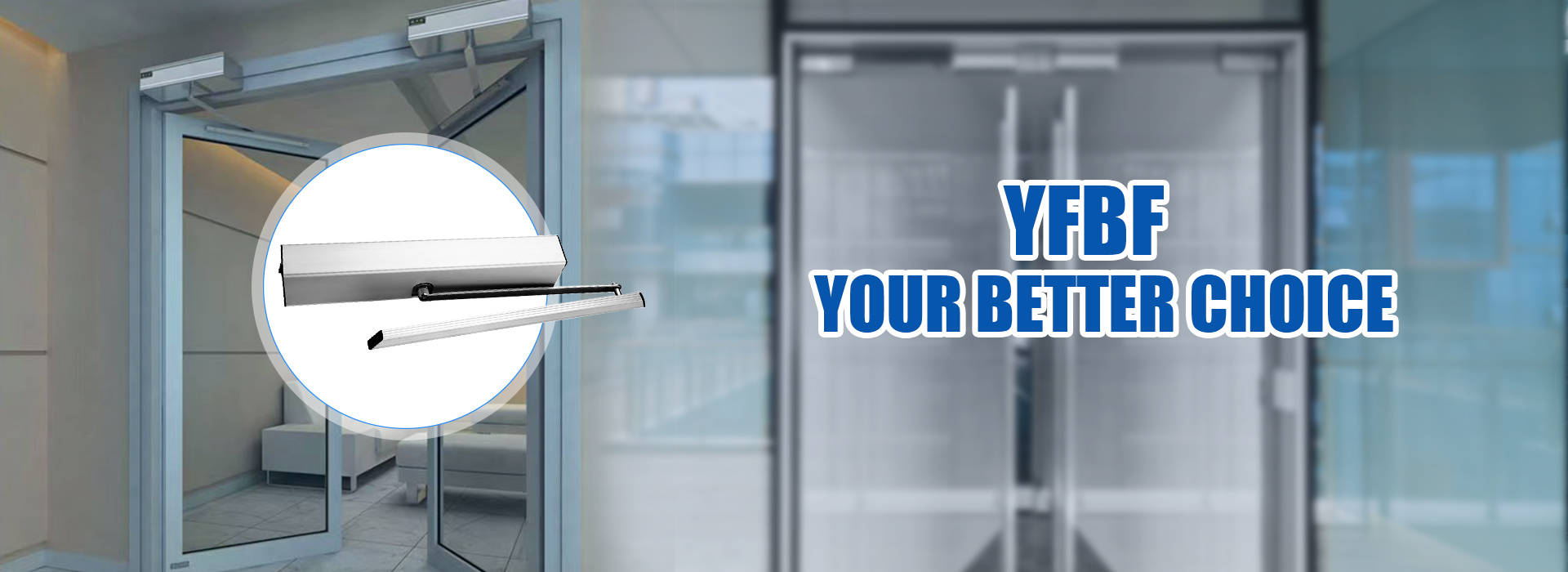
Automatic Swing Door Opener systems help everyone enter buildings with ease.
- People with disabilities use less effort to open doors.
- Touchless activation keeps hands clean and safe.
- Doors stay open longer, which helps those who move slowly.
These features support independence and create a more welcoming space.
Key Takeaways
- Automatic swing door openers make buildings easier to enter by opening doors hands-free, helping people with disabilities, parents, and those carrying items.
- These systems improve safety and hygiene with sensors that stop doors from closing on people and reduce the need to touch handles, lowering germ spread.
- Proper installation and regular maintenance keep doors working smoothly, meet accessibility rules like the ADA, and save energy by controlling door open time.
Automatic Swing Door Opener: How They Work and Where They Fit

What Is an Automatic Swing Door Opener?
An Automatic Swing Door Opener is a device that opens and closes doors without the need for physical effort. This system uses an electric motor to move the door. It helps people enter and exit buildings easily. The main parts of the system work together to provide smooth operation and safety.
Main components of an automatic swing door opener system include:
- Swinging door operators (single, double, or dual egress)
- Sensors
- Push plates
- Transmitters and receivers
These parts allow the door to open automatically when someone approaches or presses a button.
How Automatic Swing Door Openers Operate
Automatic Swing Door Openers use sensors and control systems to detect when someone wants to enter or exit. The sensors can sense motion, presence, or even a wave of the hand. Some sensors use microwave or infrared technology. Safety sensors stop the door from closing if someone is in the way. Microcomputer controllers manage how fast the door opens and closes. People can activate the door with touchless switches, push plates, or remote controls. The system can also connect to security and access control systems for added safety.
| Feature | Description |
|---|---|
| Motion Sensors | Detect movement to open the door |
| Presence Sensors | Sense people standing still near the door |
| Safety Sensors | Prevent the door from closing on someone |
| Touchless Activation | Allows hands-free entry, improving hygiene |
| Manual Override | Lets users open the door by hand during power outages |
Common Applications in Modern Buildings
Automatic Swing Door Openers fit many types of buildings. Offices, meeting rooms, medical rooms, and workshops often use these systems. They work well where space is limited. Many commercial properties, such as hospitals, airports, and retail stores, install these openers to help people move easily. These doors improve safety and keep traffic flowing in busy places. They also help save energy by reducing air exchange. Modern technology, like smart sensors and IoT integration, makes these doors even more reliable and convenient.
Accessibility, Compliance, and Added Value with Automatic Swing Door Opener
Hands-Free Access and Inclusivity
Automatic Swing Door Opener systems create a barrier-free experience for all building users. These systems use sensors, push plates, or wave activation to open doors without physical contact. People with disabilities, parents with strollers, and workers carrying items can enter and exit with ease. Wider doorways and smooth operation help those using wheelchairs or scooters. The hands-free design also reduces the spread of germs, which is important in hospitals and cleanrooms.
| Feature/Benefit | Explanation |
|---|---|
| Sensor-Based Activation | Doors open hands-free via wave sensors, push plates, or motion sensors, enabling touchless entry. |
| ADA Compliance | Designed to meet accessibility standards, improving ease of use for individuals with mobility challenges. |
| Smooth and Reliable Operation | Ensures quick and controlled door movement, supporting efficient traffic flow and safety. |
| Integration with Access Control | Compatible with keypads, fobs, and security systems to regulate entry in busy environments. |
| Hygiene Improvement | Reduces physical contact, lowering contamination risks especially in healthcare and cleanroom settings. |
| Flexible Configurations | Available in single or double doors, with options for low-energy or full-power operation. |
| Safety Features | Includes obstacle detection and panic hardware to prevent accidents in crowded areas. |
| Energy Efficiency | Minimizes drafts and energy loss by controlling door open time. |
Automatic doors also support universal design. They help everyone, no matter their age or ability, move through spaces independently. This inclusivity makes buildings more welcoming and comfortable for all.
Meeting ADA and Accessibility Standards
Modern buildings must follow strict accessibility rules. The Automatic Swing Door Opener helps meet these standards by making doors easy to use for everyone. Controls work with one hand and do not require tight grasping or twisting. The system keeps doorways wide enough for wheelchairs and scooters. Activation devices, such as push plates, are easy to reach and use.
| Requirement Aspect | Details |
|---|---|
| Operable Parts | Must be operable with one hand, no tight grasping, pinching, twisting of wrist |
| Maximum Operable Force | 5 pounds maximum for controls (activation devices) |
| Clear Floor Space Placement | Must be located beyond the arc of the door swing to prevent user injury |
| Clear Opening Width | Minimum 32 inches in both power-on and power-off modes |
| Compliance Standards | ICC A117.1, ADA Standards, ANSI/BHMA A156.10 (full power automatic doors), A156.19 (low energy/power assist) |
| Maneuvering Clearances | Different from manual doors; power-assist doors require manual door clearances; exceptions for emergency modes |
| Thresholds | Max 1/2 inch height; vertical changes 1/4 to 1/2 inch with max slope 1:2; exceptions for existing thresholds |
| Doors in Series | Minimum 48 inches plus door width between doors; turning space exceptions if both doors are automatic |
| Activation Device Requirements | Operable with one hand, no more than 5 lbf force, mounted within reach ranges per Section 309 |
| Additional Notes | Fire doors with automatic operators must deactivate operator during fire; local codes and AHJ consultation recommended |
These features ensure that buildings stay compliant with the Americans with Disabilities Act (ADA) and other local codes. Regular maintenance and proper installation keep the system working well and support ongoing compliance.
Safety, Hygiene, and Energy Efficiency Benefits
Safety is a top priority in any building. Automatic Swing Door Opener systems include advanced safety features. Sensors detect obstacles and stop the door from closing on people or objects. Auto-reverse mechanisms and manual release options allow safe operation during emergencies or power outages. Audible alerts warn people when the door is closing.
| Safety Feature | Description |
|---|---|
| Safety sensors | Detect obstacles to prevent gate from closing on people, pets, or objects by stopping or reversing |
| Manual release | Allows manual opening during power outages or emergencies, ensuring access when automatic fails |
| Electric lock | Keeps gate securely locked when not in use, operated by the opener, weather-resistant |
| Adjustable speed & force | Enables control over gate movement to minimize accidents by adjusting speed and force |
| Battery backup | Ensures gate operation during power outages for continued access |
| Warning signs and labels | Alerts people to potential hazards with clear, visible warnings |
Hands-free operation improves hygiene by reducing the need to touch door handles. This is especially important in healthcare, food service, and cleanroom environments. Automatic doors also help save energy. They open and close quickly, which reduces drafts and keeps indoor temperatures stable. Many systems use recyclable materials and support green building certifications like LEED.
Installation, Maintenance, and Choosing the Right System
Choosing the right Automatic Swing Door Opener depends on the building’s needs. Factors include traffic flow, door size, location, and user types. For example, hospitals and schools often need durable, high-traffic models. Offices and meeting rooms may choose low-energy versions for quieter operation. The system should fit the building’s design and meet all safety and accessibility standards.
Proper installation is key. Installers must follow manufacturer guidelines and local codes. Safety zones, sensor types, and clear signage help users navigate doors safely. Regular maintenance keeps the system reliable. Tasks include cleaning sensors, lubricating moving parts, checking alignment, and testing emergency features. Most systems last 10 to 15 years with good care.
Tip: Schedule annual inspections and increase checks in high-traffic areas to keep doors working smoothly and safely.
Building owners see many benefits when they upgrade in 2025.
- Properties gain value with modern, secure entry systems.
- Touchless doors improve hygiene and access for everyone.
- Smart features and energy savings attract buyers.
- Market growth shows strong demand for these solutions in the future.
FAQ
How long does it take to install an Automatic Swing Door Opener?
Most installers finish in a few hours. The process depends on the door type and building layout.
Can Automatic Swing Door Openers work during a power outage?
Many models include manual override or battery backup. Users can open the door safely if the power goes out.
Where can Automatic Swing Door Openers be used?
People install these systems in offices, hospitals, meeting rooms, and workshops. They work well in places with limited entrance space.
Post time: Jul-30-2025



